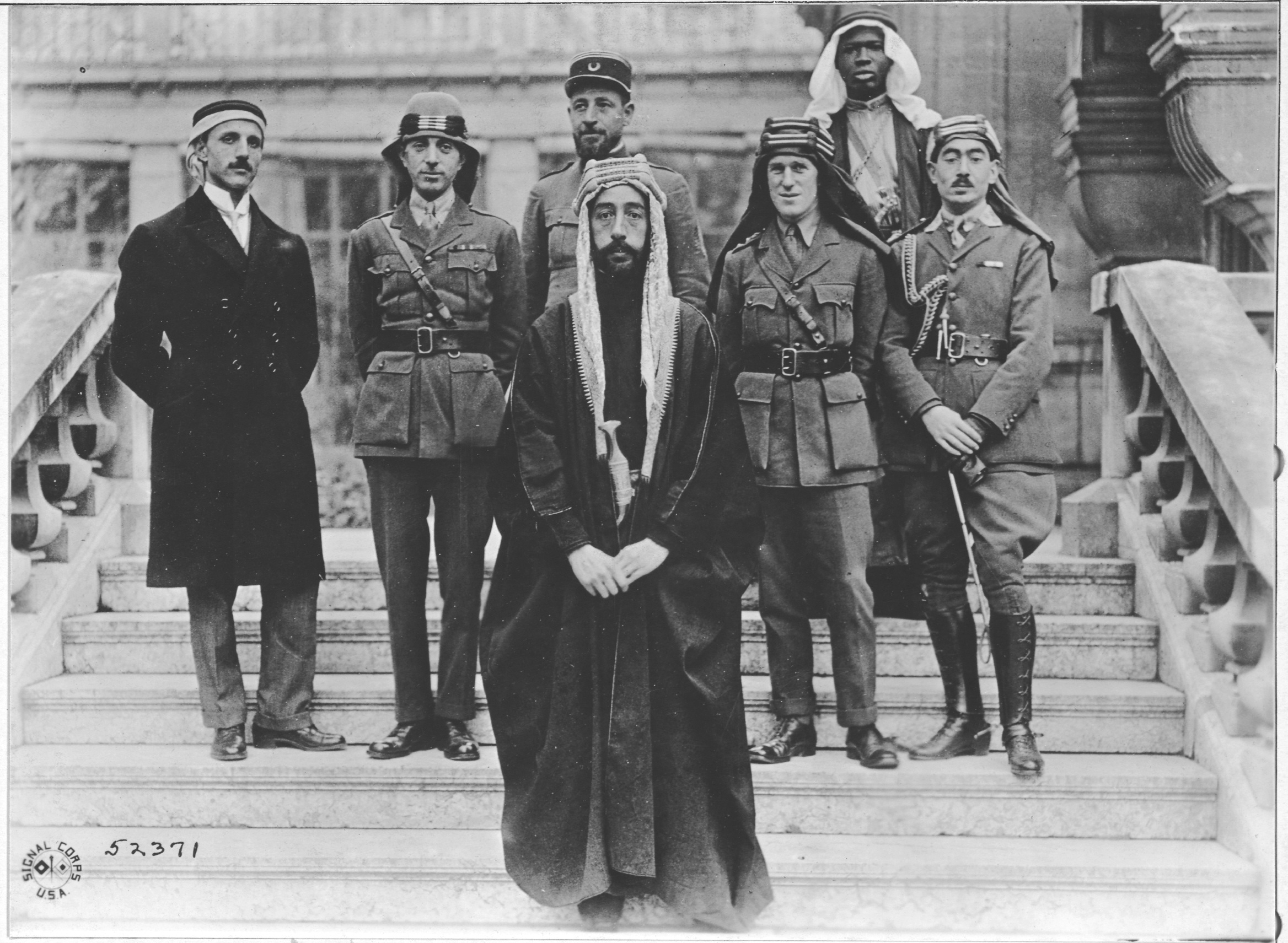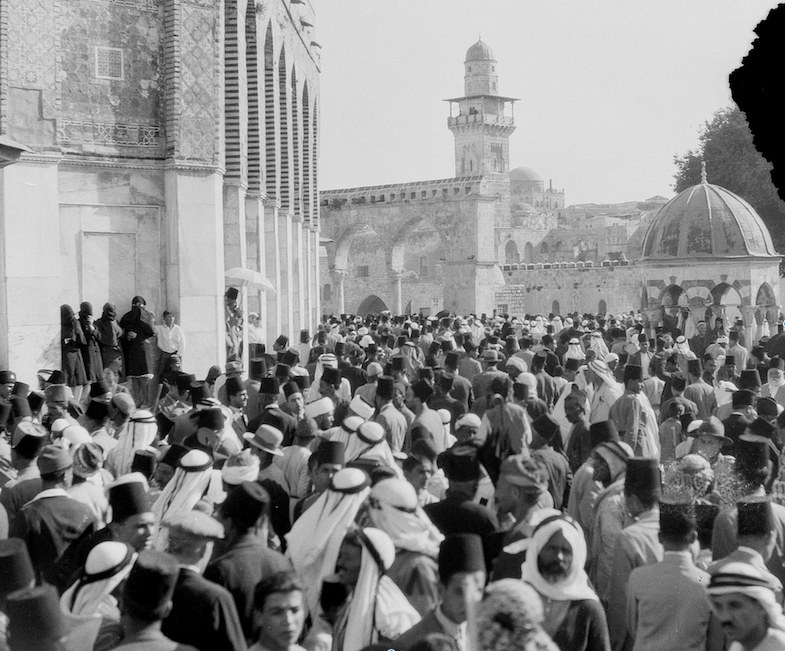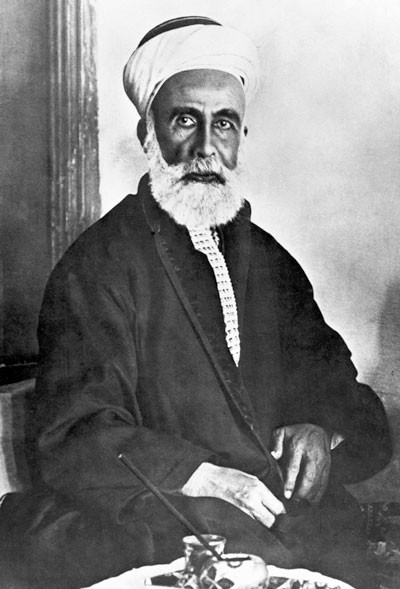|
Hashemite
The Hashemites ( ar, الهاشميون, al-Hāshimīyūn), also House of Hashim, are the royal family of Jordan, which they have ruled since 1921, and were the royal family of the kingdoms of Hejaz (1916–1925), Syria (1920), and Iraq (1921–1958). The family had ruled the city of Mecca continuously from the 10th century, frequently as vassals of outside powers, and were given the thrones of the Hejaz, Syria, Iraq, and Jordan following their World War I alliance with the British Empire; this arrangement became known as the "Sharifian solution". The family belongs to the Dhawu Awn, one of the branches of the Ḥasanid Sharifs of Mecca, also referred to as Hashemites. Their eponymous ancestor is traditionally considered to be Hashim ibn Abd Manaf, great-grandfather of the Islamic prophet Muhammad. The Ḥasanid Sharifs of Mecca (from whom the Hashemite royal family is directly descended), including the Hashemites' ancestor Qatadah ibn Idris, were Zaydī Shīʿas until ... [...More Info...] [...Related Items...] OR: [Wikipedia] [Google] [Baidu] |
14 July Revolution
The 14 July Revolution, also known as the 1958 Iraqi coup d'état, took place on 14 July 1958 in Iraq, and resulted in the overthrow of the Hashemite monarchy in Iraq that had been established by King Faisal I in 1921 under the auspices of the British. King Faisal II, Prince 'Abd al-Ilah, and Prime Minister Nuri al-Said were executed by the military. As a result of the overthrow of the Iraqi Hashemite dynasty, the ''coup d'état'' established the Iraqi Republic. The coup ended the Hashemite Arab Federation between Iraq and Jordan that had been established just 6 months earlier. Abd al-Karim Qasim seized power as Prime Minister until 1963, when he was overthrown and killed in the Ramadan Revolution. Pre-coup grievances Regional disturbances During the Second World War, Iraq was home to a growing number of Arab nationalists. They aimed, in part, to remove British imperial influence in Iraq.. This sentiment grew from a politicised educational system in Iraq and an increasingly as ... [...More Info...] [...Related Items...] OR: [Wikipedia] [Google] [Baidu] |
Emirate Of Transjordan
The Emirate of Transjordan ( ar, إمارة شرق الأردن, Imārat Sharq al-Urdun, Emirate of East Jordan), officially known as the Amirate of Trans-Jordan, was a British protectorate established on 11 April 1921,Hashemite Monarchs of Jordan , "The Emirate of Transjordan was founded on April 11, 1921, and became the Hashemite Kingdom of Jordan upon formal independence from Britain in 1946" which remained as such until achieving formal independence in 1946. After the Ottoman defeat in World War I, the was administered within [...More Info...] [...Related Items...] OR: [Wikipedia] [Google] [Baidu] |
Abdullah II
Abdullah II bin Al-Hussein ( ar, عبدالله الثاني بن الحسين , translit=ʿAbd Allāh aṯ-ṯānī ibn al-Ḥusayn; born 30 January 1962) is King of Jordan, having ascended the throne on 7 February 1999. He is a member of the Hashemite dynasty, who have been the reigning royal family of Jordan since 1921, and is considered a 41st-generation direct descendant of the Islamic prophet Muhammad. Abdullah was born in Amman as the first child of King Hussein and his second wife, Princess Muna. As the king's eldest son, Abdullah was heir apparent until Hussein transferred the title to Abdullah's uncle, Prince Hassan, in 1965. Abdullah began his schooling in Amman, continuing his education abroad. He began his military career in 1980 as a training officer in the Jordanian Armed Forces, later assuming command of the country's Special Forces in 1994, eventually becoming a major general in 1998. In 1993 Abdullah married Rania Al-Yassin, and they went on to have fo ... [...More Info...] [...Related Items...] OR: [Wikipedia] [Google] [Baidu] |
Jordan
Jordan ( ar, الأردن; tr. ' ), officially the Hashemite Kingdom of Jordan,; tr. ' is a country in Western Asia. It is situated at the crossroads of Asia, Africa, and Europe, within the Levant region, on the East Bank of the Jordan River. Jordan is bordered by Saudi Arabia to the south and east, Iraq to the northeast, Syria to the north, and the Palestinian West Bank, Israel, and the Dead Sea to the west. It has a coastline in its southwest on the Gulf of Aqaba's Red Sea, which separates Jordan from Egypt. Amman is Jordan's capital and largest city, as well as its economic, political, and cultural centre. Modern-day Jordan has been inhabited by humans since the Paleolithic period. Three stable kingdoms emerged there at the end of the Bronze Age: Ammon, Moab and Edom. In the third century BC, the Arab Nabataeans established their Kingdom with Petra as the capital. Later rulers of the Transjordan region include the Assyrian, Babylonian, Roman, Byzantin ... [...More Info...] [...Related Items...] OR: [Wikipedia] [Google] [Baidu] |
Faisal I
Faisal I bin Al-Hussein bin Ali Al-Hashemi ( ar, فيصل الأول بن الحسين بن علي الهاشمي, ''Faysal el-Evvel bin al-Ḥusayn bin Alī el-Hâşimî''; 20 May 1885 – 8 September 1933) was King of the Arab Kingdom of Syria or Greater Syria in 1920, and was King of Iraq from 23 August 1921 until his death. He was the third son of Hussein bin Ali, the Grand Emir and Sharif of Mecca, who was proclaimed as King of the Arabs in June 1916. He was a 38th-generation direct descendant of Muhammad, as he belonged to the Hashemite family. Faisal fostered unity between Sunni and Shiite Muslims to encourage common loyalty and promote pan-Arabism in the goal of creating an Arab state that would include Iraq, Syria and the rest of the Fertile Crescent. While in power, Faisal tried to diversify his administration by including different ethnic and religious groups in offices. However, Faisal's attempt at pan-Arab nationalism possibly contributed to the isolation of c ... [...More Info...] [...Related Items...] OR: [Wikipedia] [Google] [Baidu] |
Kingdom Of Hejaz
The Hashemite Kingdom of Hejaz ( ar, المملكة الحجازية الهاشمية, ''Al-Mamlakah al-Ḥijāziyyah Al-Hāshimiyyah'') was a state in the Hejaz region in the Middle East that included the western portion of the Arabian Peninsula that was ruled by the Hashemite dynasty. It was self-proclaimed as a kingdom in June 1916 during the First World War, to be independent from the Ottoman Empire, on the basis of an alliance with the British Empire to drive the Ottoman Army from the Arabian Peninsula during the Arab Revolt. The United Kingdom promised King Ali of Hejaz a single independent Arab state that would include modern day Iraq, Israel, Jordan, Palestine, and Syria in addition to the Hejaz region. However, at the end of the First World War, the Treaty of Versailles turned Syria into a French League of Nations mandate and Iraq, Palestine and Transjordan into British mandates. Hashemite princes were installed as monarchs under the British mandates in ... [...More Info...] [...Related Items...] OR: [Wikipedia] [Google] [Baidu] |
Faisal II
Faisal II ( ar, الملك فيصل الثاني ''el-Melik Faysal es-Sânî'') (2 May 1935 – 14 July 1958) was the last King of Iraq. He reigned from 4 April 1939 until July 1958, when he was killed during the 14 July Revolution. This regicide marked the end of the thirty-seven-year-old Hashemite monarchy in Iraq, which then became a republic. The only son of King Ghazi of Iraq and Queen Aliya, Faisal acceded to the throne at the age of three after his father was killed in a car crash. A regency was set up under his uncle Prince 'Abd al-Ilah. In 1941, a pro-Axis coup d'état overthrew the regent. The British responded by initiating an invasion of Iraq a month later and restored 'Abd al-Ilah to power. During the Second World War, Faisal was evacuated along with his mother to the United Kingdom, where he attended Harrow School. The regency ended in May 1953 when Faisal came of age. Faisal's reign grew increasingly unstable against a backdrop of economic inequality coupled w ... [...More Info...] [...Related Items...] OR: [Wikipedia] [Google] [Baidu] |
Hashemite Custodianship Of Jerusalem Holy Sites
Hashemite custodianship refers to the Jordanian royal family's role in tending Muslim and Christian holy sites in the city of Jerusalem. The legacy traces back to 1924 when the Supreme Muslim Council, the highest Muslim body in charge of Muslim community affairs in Mandatory Palestine, chose Hussein bin Ali ( Sharif of Mecca) as custodian of Al-Aqsa. The custodianship became a Hashemite legacy administered by consecutive Jordanian kings. Jordan controlled East Jerusalem and the West Bank in 1948, and annexed the territories in 1951 until they were lost to Israel during the 1967 Six-Day War. Jordan renounced claims to the territory in 1988, and signed a peace treaty with Israel in 1994, whose 9th article states that Israel commits to "respect the present special role of the Hashemite Kingdom of Jordan in Muslim Holy shrines in Jerusalem" and that "when negotiations on the permanent status will take place, Israel will give high priority to the Jordanian historic role in these s ... [...More Info...] [...Related Items...] OR: [Wikipedia] [Google] [Baidu] |
King Of Jordan
The king of the Hashemite Kingdom of Jordan is Jordan's head of state and monarch. He serves as the head of the Jordanian monarchy—the Hashemite dynasty. The king is addressed as His Majesty (). Jordan is a constitutional monarchy. However, the king is vested with somewhat more executive and legislative power than is typically the case for constitutional monarchs. He is commander-in-chief of the Jordanian Armed Forces and appoints the Prime Minister of Jordan and the directors of security agencies. He also appoints the members of the upper house, the Senate, as well as the members of the Constitutional Court. The current king, Abdullah II, took the throne on 7 February 1999 following the death of his father, Hussein. History The sons of Hussein bin Ali, the Grand Emir and Sharif of Mecca were set up as the kings of Iraq and Jordan in the aftermath of the Arab Revolt and World War I. The Jordanian monarchy was set up in 1921, with Abdullah I becoming Emir of the Emirat ... [...More Info...] [...Related Items...] OR: [Wikipedia] [Google] [Baidu] |
Hussein Bin Ali, Sharif Of Mecca
Hussein bin Ali al-Hashimi ( ar, الحسين بن علي الهاشمي, al-Ḥusayn bin ‘Alī al-Hāshimī; 1 May 18544 June 1931) was an Arab leader from the Banu Hashim clan who was the Sharif and Emir of Mecca from 1908 and, after proclaiming the Great Arab Revolt against the Ottoman Empire, King of the Hejaz from 1916 to 1924 and Caliph from 1924 to 1925. After the abolition of the Ottoman Caliphate he was briefly proclaimed Caliph until the invasion of the Hejaz by the Saudis the following year. He was a 37th-generation direct descendant of Muhammad, as he belonged to the Hashemite family. A member of the Dhawu Awn clan of the Qatadid emirs of Mecca, he was perceived to have rebellious inclinations and in 1893 was summoned to Istanbul, where he was kept on the Council of State. In 1908, in the aftermath of the Young Turk Revolution, he was appointed Emir of Mecca by the Ottoman sultan Abdul Hamid II. In 1916, with the promise of British support for Arab independe ... [...More Info...] [...Related Items...] OR: [Wikipedia] [Google] [Baidu] |
Kingdom Of Iraq
The Hashemite Kingdom of Iraq ( ar, المملكة العراقية الهاشمية, translit=al-Mamlakah al-ʿIrāqiyyah ʾal-Hāshimyyah) was a state located in the Middle East from 1932 to 1958. It was founded on 23 August 1921 as the Kingdom of Iraq, following the defeat of the Ottoman Empire in the Mesopotamian campaign of the First World War. Although a League of Nations mandate was awarded to the United Kingdom in 1920, the 1920 Iraqi revolt resulted in the scrapping of the original mandate plan in favour of a formally sovereign Iraqi kingdom, but one that was under effective British administration. The plan was formally established by the Anglo-Iraqi Treaty. The role of the United Kingdom in the formal administration of the Kingdom of Iraq was ended in 1932, following the Anglo-Iraqi Treaty (1930). Now officially a fully independent kingdom, officially named as the Hashemite Kingdom of Iraq, it underwent a period of turbulence under its Hashemite rulers throughout its ... [...More Info...] [...Related Items...] OR: [Wikipedia] [Google] [Baidu] |
Ali Of Hejaz
Ali bin Hussein, GBE ( ar, علي بن الحسين بن علي الهاشمي, translit=Alī ibn al-Ḥusayn ibn Alī el-Hâşimî; 18791935), was King of Hejaz and Grand Sharif of Mecca from October 1924 until he was deposed by Abdulaziz bin Abdulrahman Al Saud in December 1925. He was the eldest son of King Hussein bin Ali and a scion of the Hashemite family. With the passing of the kingship from his father he also became the heir to the title of caliph, but he did not adopt the office and the style of caliph. Early life The eldest son of Hussein, Ali bin Hussein was born in Mecca and was educated at Ghalata Serai College (Galatasaray High School) in İstanbul (Constantinople). His father was appointed Grand Sharif of Mecca by the Ottoman Empire in 1908. However, his relationship with the Young Turks in control of the Empire increasingly became strained, and, in 1916, he became one of the leaders of the Arab Revolt against Turkish rule. Following the Revolt's success, Hu ... [...More Info...] [...Related Items...] OR: [Wikipedia] [Google] [Baidu] |
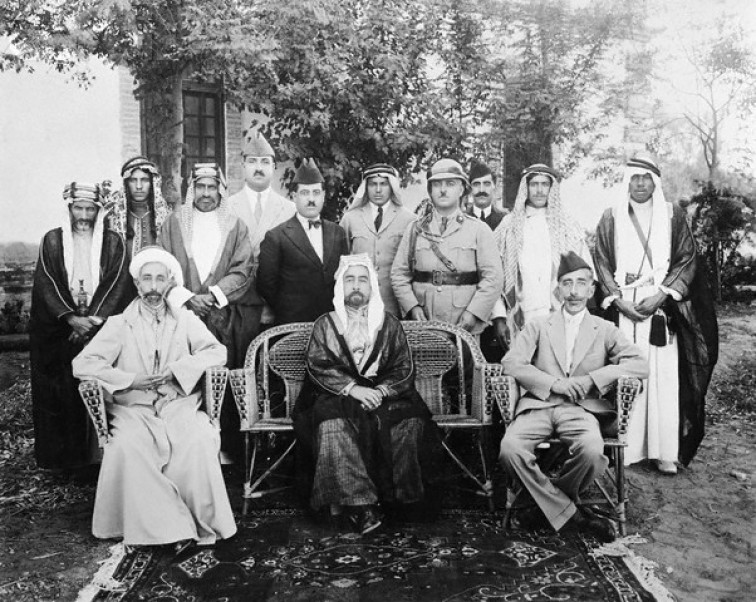
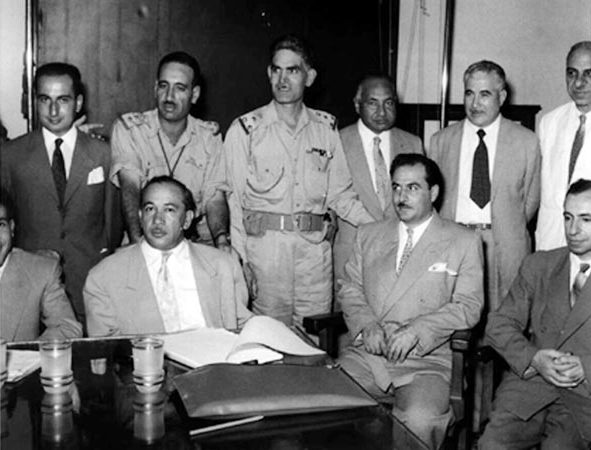

.jpg)
